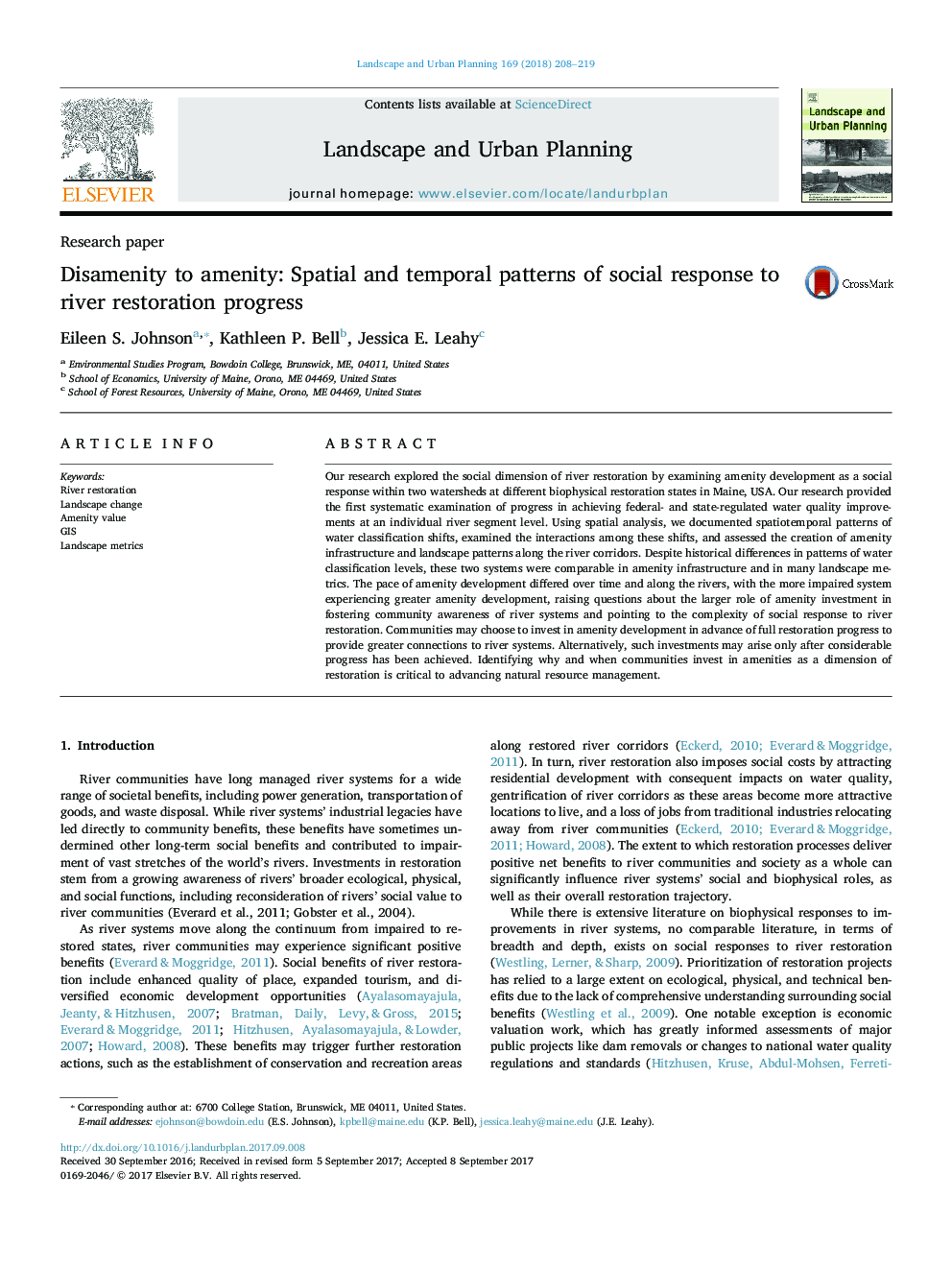| Article ID | Journal | Published Year | Pages | File Type |
|---|---|---|---|---|
| 5114924 | Landscape and Urban Planning | 2018 | 12 Pages |
Abstract
Our research explored the social dimension of river restoration by examining amenity development as a social response within two watersheds at different biophysical restoration states in Maine, USA. Our research provided the first systematic examination of progress in achieving federal- and state-regulated water quality improvements at an individual river segment level. Using spatial analysis, we documented spatiotemporal patterns of water classification shifts, examined the interactions among these shifts, and assessed the creation of amenity infrastructure and landscape patterns along the river corridors. Despite historical differences in patterns of water classification levels, these two systems were comparable in amenity infrastructure and in many landscape metrics. The pace of amenity development differed over time and along the rivers, with the more impaired system experiencing greater amenity development, raising questions about the larger role of amenity investment in fostering community awareness of river systems and pointing to the complexity of social response to river restoration. Communities may choose to invest in amenity development in advance of full restoration progress to provide greater connections to river systems. Alternatively, such investments may arise only after considerable progress has been achieved. Identifying why and when communities invest in amenities as a dimension of restoration is critical to advancing natural resource management.
Related Topics
Life Sciences
Agricultural and Biological Sciences
Ecology, Evolution, Behavior and Systematics
Authors
Eileen S. Johnson, Kathleen P. Bell, Jessica E. Leahy,
